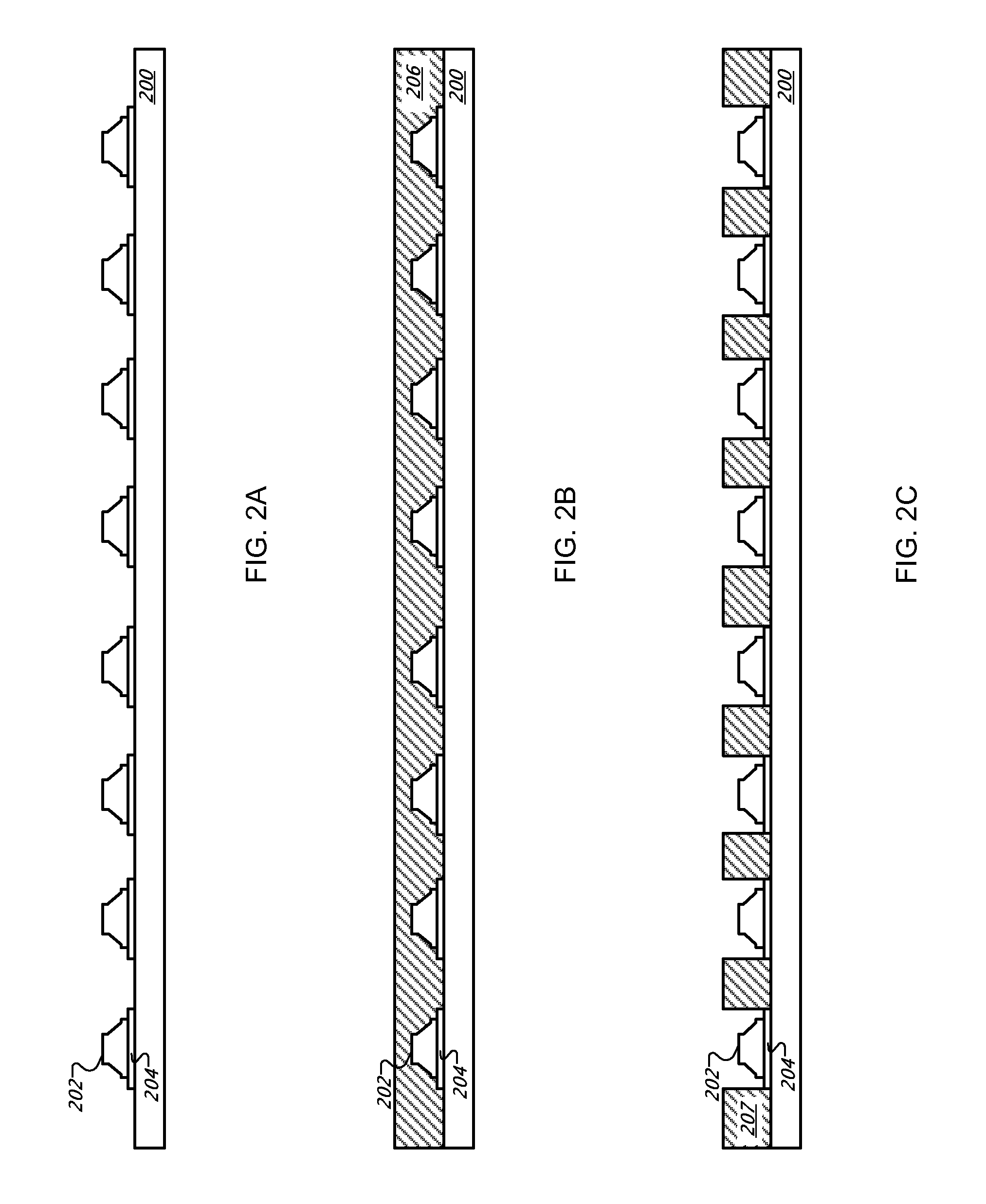Fabricating low cost solder bumps on integrated circuit wafers
a technology of integrated circuits and solder bumps, which is applied in the direction of electrical equipment, semiconductor devices, semiconductor/solid-state device details, etc., can solve the problems of high cost of vacuum deposition process and equipment, high cost of wafer bumping with thin-film ubm processes, and high cost of plating equipment, facilitation, maintenance and bath chemistry maintenance involved in electroless plating processes, etc., to achieve no repassivation layer cost, the effect of lowering the cost o
- Summary
- Abstract
- Description
- Claims
- Application Information
AI Technical Summary
Benefits of technology
Problems solved by technology
Method used
Image
Examples
example ic
Package Using Solder Bumps with Stud Stumps
[0019]FIG. 1 illustrates an example IC package 100 including IC chip 102 bonded to substrate 104 using solder bumps 110 which can be fabricated in accordance with processes described in reference to FIGS. 2-4. IC package 100 can be formed using a flip-chip method of interconnection where solder bumps 110 electrically interconnect IC chip 102 to substrate 104 or sometimes to another IC chip.
[0020]Solder bumps 110 are small spheres of solder (solder balls) that can be bonded to contact areas or metal (e.g., aluminum) bond pads 106 formed on a face (circuit side) of IC chip 102 during wafer fabrication, and subsequently face-down bonded with substrate 104. The length of electrical connections between IC chip 102 and substrate 104 can be minimized by: (a) forming solder bumps 110 on bond pads 106; (b) flipping IC chip 102 face-down; (c) aligning solder bumps 110 with bond pads 108 on substrate 104; and (d) reflowing solder balls 110 in a furnac...
PUM
 Login to View More
Login to View More Abstract
Description
Claims
Application Information
 Login to View More
Login to View More - R&D
- Intellectual Property
- Life Sciences
- Materials
- Tech Scout
- Unparalleled Data Quality
- Higher Quality Content
- 60% Fewer Hallucinations
Browse by: Latest US Patents, China's latest patents, Technical Efficacy Thesaurus, Application Domain, Technology Topic, Popular Technical Reports.
© 2025 PatSnap. All rights reserved.Legal|Privacy policy|Modern Slavery Act Transparency Statement|Sitemap|About US| Contact US: help@patsnap.com



